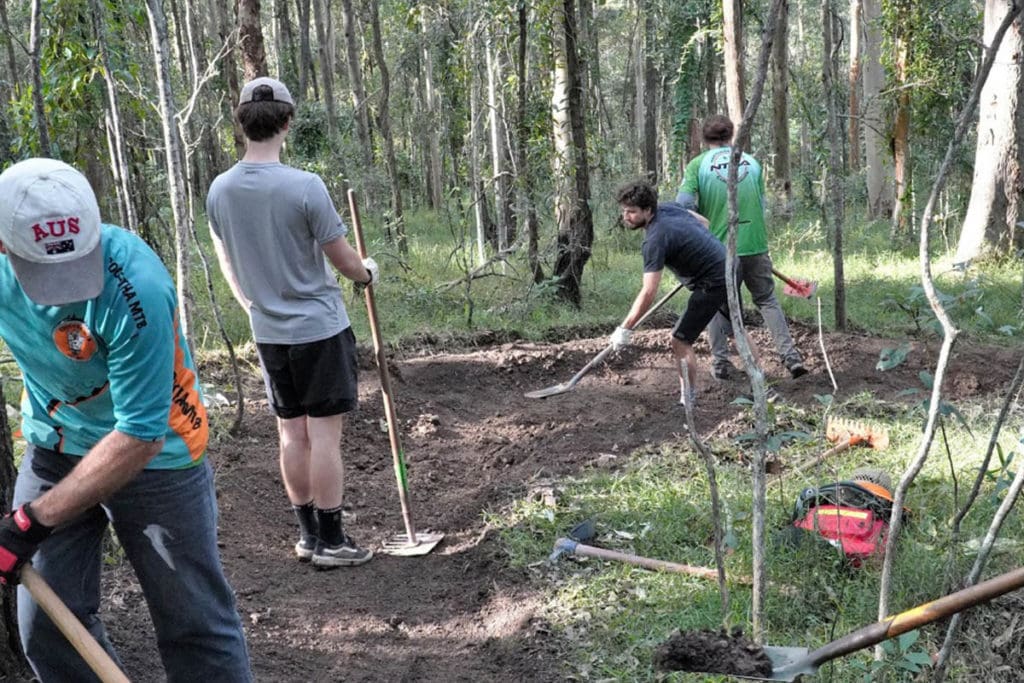Better Trail Maintenance Vision Without the Headaches

Brisbane, Queensland
A new trail audit and asset management system is putting control back in the hands of clubs and individuals on the ground and doing the hands-on trail maintenance.
Trail Vision, developed in Queensland and soon to be officially launched, is designed to make it easy to capture data and images out in the field, then quickly create meaningful reports, according to Trail Vision co-founder and director Alan Gould.
“Instead of being a management system and analytics exclusively for managers in an office, it’s something equally accessible for teams on the ground,” Alan said.
“We’re trying to keep it simple and have a very, very practical bottom-up approach to trail management, making sure all the data is captured in the field. Then we have smarts in the platform to do asset management system-like reporting back up the ladder.”
Historic Data and Alerts
Trail Vision also provides dashboard reporting of historical information, which helps to alert teams when significant repairs are repeatedly conducted in the same locations.
“Instead of repairing the same symptom time and time again, trail managers have an historical context of the elements they’re working on. They’ll know they can’t just do a patch repair because they are obviously stability issues in that area.
“It alerts them to the need to do more intensive maintenance, broader earthworks, otherwise it will just fail again in the next month or two, exactly as the pattern suggests.”
Alan and co-founder Craig Meinicke will present Trail Vision at this year’s Sustainable Trails Conference in Tasmania in November.
The conference organiser, TRC (Tourism, Recreation, Conservation) is a channel partner with Trail Vision. However, the Brisbane-based software as a service company is also talking independently to many local governments throughout Australia and resort management with maintain bike and walking trails.
Painful Inspiration
Trial Vision is Craig’s brainchild, borne from his work as owner of Blue Sky Trails and doing audits for land managers.
He saw two problems with existing trail audit platforms.
Audits in the fields were “far more painful than they should be to keep in top of the data that needs to be captured”.
Secondly, the process of compiling reports on that data was equally painful.
Alan said: “That’s especially the case when you’re talking about outdoorsy people, who love being outside and having a good time in mother nature but don’t want to be spending hours in front of Microsoft Office typing out a report.”
Craig and an associate at his local trail care club developed a prototype of Trail Vision, using open-source software.
“That was the proof of concept that it could be done and we’ve been working since December last year to build a commercially ready platform,” Alan said.
Trail Vision comprises two main components: an app to easily collect information in the field and a web portal to store and further analyse the data.
The app provides a series of collector forms, to go out in the field to capture the data, and a templating engine to quickly and efficiently create reports with meaningful insights and analytics.
That information then uploads into the Trail Vision web portal, so organisations such as the parks and wildlife services, and other land managers, can review and record the data and images.
“Those insight and analytics aren’t just in the reports but also in the user’s dashboard, which is different to what you would expect from an analytics package,” Alan added.
“Existing asset management systems are typically designed for reporting on works that have been done, rather than helping the people on the ground to do their job.
“That’s where we’re looking to come in. Trail Vision is helping them triage the work they’re doing on the ground, to help them manage and report that back up the chain, and then provide the analytics up the chain that they might have expected from their asset management system. So it’s two birds with one stone.
“The value proposition for a council or parks & wildlife service is they can have the web portal, while an associated mountain bike club can have the app. Club members can be maintaining their trails – as 95% of trails in Australia are run by and maintained by volunteer organisations – but they can be reporting that information back to the land manager so they can have oversight over the state of the trails and their condition. That manager can have an understanding of the maintenance requirements and then assist them with funding on any critical things that come up.
“Clubs love it. The idea for Trail Vision also came from Craig’s involvement in the Northside Trail Care Alliance in Brisbane. We have huge rain events that completely destroy the trails. We apply for funding and don’t get it because they say ‘we believe you but you’ve provided no evidence’.
“That was the lightbulb moment for Craig that we need to have a really simple way of capturing our maintenance problems and then reporting them.”
Find out more about Trail Vision and the 2022 Sustainable Trails Conference, being held in north east Tasmania on the 1st to 3rd November.
